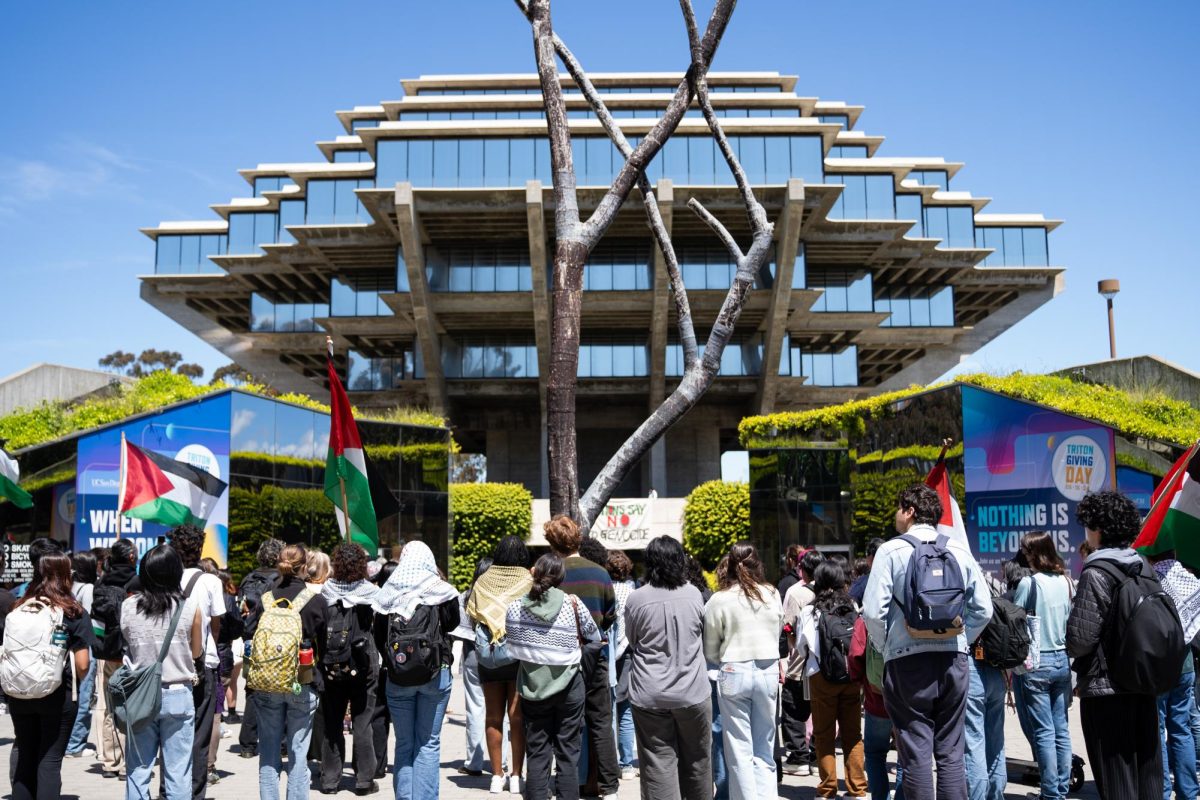A report published by a Latino-focused think tank has criticized the University of California for declining percentages of acceptance for Latino and black students, citing concerns over the potential stratification of UC campuses along racial lines.
The study from the Tomas Rivera Policy Institute found a sharp 23-percent decline in aggregated acceptance rates of minority students over a nine-year period. The institute, affiliated with the University of Southern California, examined first-time UC freshmen from 1995 to 2003. Specifically, the report focused on the impact made by Proposition 209, which eliminated the use of race and ethnicity in considerations for UC admissions.
“All students have a harder time getting into the UCs, but the acceptance rates for black and Latino students are abysmally low,” institute President Harry Pachon said.
Pachon attributed the gaps partly to poorer schools — found in areas with a large number of underrepresented minorities — which have fewer resources, like Advanced Placement class offerings.
“When you look at SAT and [GPAs of students from those areas], there’s an unfair playing field,” he said.
The mainstream media reports increases in the raw number of black and Latino students admitted to UC campuses, but they actually make up a decreasing percentage of the overall freshman class, according to Pachon.
Using a system of aggregated campus acceptance rates, the institute calculated that the percent of Latino applicants accepted to UC campuses fell from 68 percent in 1995 to 45 percent in 2003, while the number of black students admitted dropped from 58 percent to 35 percent in the same interval of years. In the same time period, acceptance for white students fell from approximately 67 percent to 52 percent.
The aggregated acceptance rate is the total number of acceptances offered at each of the eight campuses divided by the total number of applications that were filed in each of the campuses. Data from 1995 reflect the UC admission situation during affirmative action, compared to 2003, the second year the university implemented “comprehensive review” for screening applicants.
The report attributed the steep decrease to the implementation of race-neutral policies. Voters banned the consideration of race in admission decisions at public institutions in 1996 with Proposition 209.
Administrators acknowledge that work needs to be done, UC Office of the President spokeswoman Ravi Poorsina said.
However, the university believes the extent of the problem is exacerbated by the methodology used by the institute, according to Poorsina. The university counts each student once, regardless of how many campuses he or she applies to, while the institute’s system calculated a single student four times if he or she applied to four campuses, which tended to decrease acceptance rates.
“Students aren’t duplicated, so we think [counting each student once is] the accurate way of looking at it,” Poorsina said.
All tudents who meet eligibility requirements are guaranteed a spot at a UC campus, though the school may not be a student’s first choice. Fall 2003 minority students denied admissions either applied from out-of-state or did not meet eligibility requirements, according to Poorsina.
Pachon said that the aggregated methodology of the study is “better because students apply to more than one campus.”
The report used only the number of high school students who completed “A-G” course requirements for UC eligibility in the candidate pool. “A-G” courses require completion of 15 units of coursework in various subjects, including four years of college-preparatory English.
“Realistically, that’s not our candidate pool,” Poorsina said. “[The study] didn’t take into consideration GPA and test scores.”
The decrease in admissions rates was the sharpest at UC Berkeley and UCLA, the two most selective campuses of the UC system, according to the report.
Pachon said the institute is “very worried” over the possibility of ethnic stratification at some UC campuses. He singled out UC Riverside as having one of the largest black and Latino populations among the UC campuses.
The report also recognized UCSD for making progress in minority acceptance and representation in 2003, but the efforts have not restored the rate of acceptance to near-1997 levels.
“We saw a steep drop with Proposition 209,” Assistant Vice Chancellor of Admissions and Enrollment Services Mae Brown said. “We’re gradually beginning to rebuild.”
UCSD made slight increases in admissions of minority freshmen in fall 2003, according to Brown. The institute’s report only looked at freshmen, but transfer students should be taken into consideration to get the complete picture, she said.
Starting in fall 2002, the UC system has used comprehensive review as a guideline for admitting students to its campuses. Under this approach, the study found no restoration of minority acceptance rates to 1997 levels. Comprehensive review weighs heavily on academic performance, which comprises 77 percent of the decision. Socioeconomic factors, leadership, community service and participation in precollege programs make up the remaining factors that are reviewed.
UC officials take into consideration the candidate’s education environment, but “academic achievement is foremost,” according to Brown. Race is not a factor in the review process.
“It’s disappointing,” said Patrick Velasquez, director of the Office of Academic Support and Instructional Services and a member of UCSD’s Chicano/ Latino Concilio. “[Latino and black admissions are] a little better than previous years, but nowhere near where it should be to reflect the population.”
The problem is the lack of a cohesive plan to improve diversity backed by funds, according to Velasquez. There is a “sense of crisis” in the San Diego Latino community, he said.
Velasquez said the campus climate leaves many black and Latino students feeling isolated.
“I haven’t met anyone of Puerto Rican descent,” said Eleanor Roosevelt College sophomore Marissa Borjon, who is of Mexican descent and works as an intern for the Academic Transition Program in O.A.S.I.S. “Personally, being Latina, it’s definitely harder to identify with others culturally.”
All sides agree that outreach programs need continued funding to provide academic preparation for underrepresented minority groups. Outreach budget cuts have affected programs such as O.A.S.I.S. and the Early Academic Outreach Program.
“We need to secure funding for these programs annually,” said UC Student Regent Jodi Anderson. “Especially at times like these, budgets are very bleak. It’s important that these students aren’t squeezed out of the UC system.”
Anderson said the UC Board of Regents already works with faculty members to ensure holistic evaluation of students, but it also needs the help of legislators and schools to change educational inequalities.
“Frankly, we’re very disappointed with [former UCSD Chancellor Robert C.] Dynes,” Velasquez said. “We have cautious optimism by looking to the chancellor [Marye Anne Fox] to come up with a comprehensive plan for diversity, and [hope] that she’ll demonstrate leadership around this issue.”







